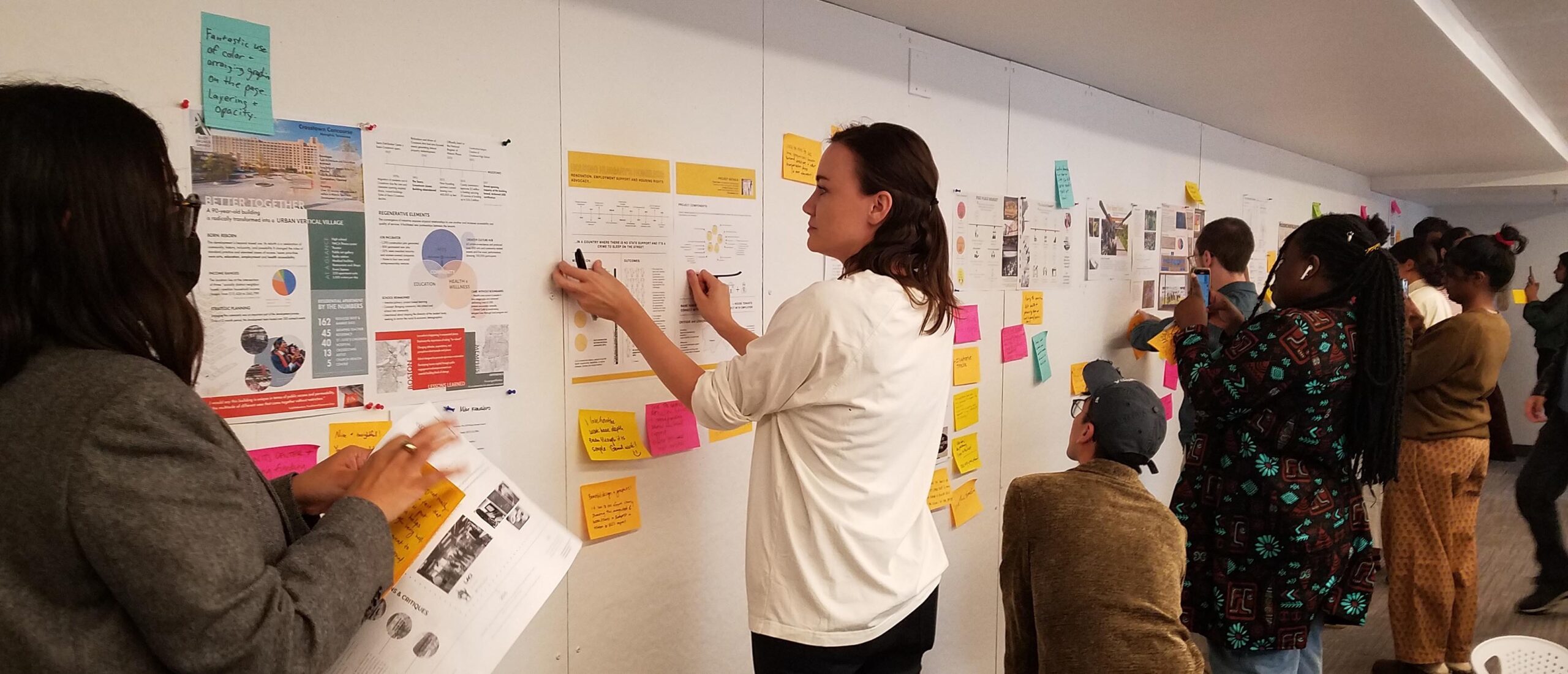Areas of concentration
The Environment, Climate, and Health Area of Concentration encompasses the broad field of environmental planning that includes a range of professional activities employing various skills. Students may go on to work in the public or private sectors. Typical environmental planning projects focus on achieving the “triple bottom-line” in planning activities by reconciling conflicts between economic development, social equity, and ecological protection and restoration through sustainable development. Planning work may include community organizing and workforce development, sustainable transportation and urban food systems, ecological infrastructure design, and preparing environmental impact statements.
The breadth of environmental courses available at the GSD and other Harvard schools, especially the Kennedy School, Law School, and School of Public Health, reflect the multiple dimensions of sustainability in the context of planning practice and research. The Harvard Center on the Environment (HUCE) has prepared an excellent overview.
Requirements:
Students interested in the Environment, Climate, and Health Area of Concentration must choose at least two approved courses from the GSD and one from outside the GSD, or suggest an alternate program of three courses for approval by the concentration advisor. Please note that courses may require the permission of the instructor and/or the department, especially outside the GSD.
The Housing, Community, and Economic Development Area of Concentration is for students interested in the planning, development, and regulation of housing resources and their surrounding neighborhoods. Planners who choose this concentration may envision themselves working in the public sector as policymakers, program administrators, or development facilitators or in the non-profit or for-profit sector as developers, community activists, or consultants. These students are interested in shaping the part of the built environment that provides the setting for the city’s residential and closely related functions.
Because housing is a vital social and economic element of the city, a wide range of courses is relevant to this work. Concentrators may choose to focus on aspects of the work as diverse as housing policy, market analysis, physical design and planning, real estate finance, the development process, community engagement, implementation strategies, and regulatory regimens. Neighborhoods are complex parts of the metropolitan environment, requiring a wide range of skills. This element of the concentration may include work on many of the topics listed above and land use regulation, urban design, demographic and economic analysis, local politics, and related disciplines such as transportation, infrastructure, retail and social networks.
The International and Comparative Planning Area of Concentration provides students with solid professional and academic preparation in international planning. The concentration responds to three global concerns. The first is the increasing prominence of urbanization as a major political, economic, and social force in world affairs. The second concern is the rapid growth of cities in the developing world, where most growth in the planet’s urban population occurs. Finally, the concentration reflects the recognition that planners can draw profound lessons from a comparative perspective on urban phenomena, looking at different countries and diverse urban environments.
Within the concentration, students can focus broadly on international and comparative planning or concentrate on a number of subthemes. These include international development planning, planning in a world region of interest (such as South Asia, the Middle East, or Africa, to name just a few), and comparative planning.
The Real Estate and Urban Development Area of Concentration courses for Real Estate and Urban Development is divided into four main parts: development analysis; physical planning, design and construction; finance and deal structuring; and implementation. Students may choose to study real estate and urban development more broadly or focus on a subarea such as public-private partnerships, negotiations, or the physical site planning. Students may envision working in the public sector focused on physical planning or implementation or in the private or nonprofit sectors, possibly as developers or consultants.
The Transportation and Infrastructure Area of Concentration covers any form of infrastructure that is an important shaper of the built environment, including transportation, stormwater, drinking water, and sewage. Students are encouraged to take courses that examine infrastructure from a variety of perspectives, including planning practice and policy, analytic methods applied to infrastructure planning and operations, physical design of infrastructure, the relationship between infrastructure and land use, private infrastructure providers and their regulation, and specialized courses in particular modes of transportation or types of infrastructure.
The Urban Analytics Area of Concentration introduces students to describing, analyzing, and prescribing solutions to urban planning problems using spatial data and analysis methods. Today, an increasing share of urban planning work addresses spatial interactions between numerous geographically bound actors and processes that are too complex to visualize and analyze without computational tools. Geographic Information Systems, spatial statistics, and algorithmic approaches to spatial data analysis are used in public and private planning practices at the local, regional and international scales to describe urban challenges, evaluate the impacts of alternative solutions, and visualize complex information.
The Urban Design Area of Concentration requires students to dedicate twelve credit hours within their required course load to courses that focus on the physical form of the built environment. Eight of these credit hours must be fulfilled with an option studio* offered by the urban planning and design department. The remaining four credit hours can be satisfied with an approved urban design-related course.
